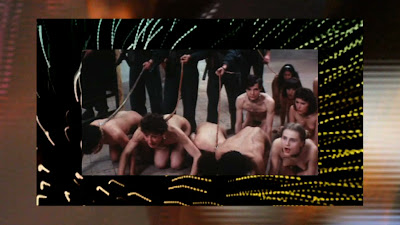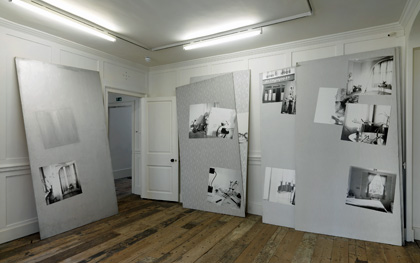Text I wrote published in
MS.USE Magazine
 “In these moments of subtle pain, it becomes impossible for us, even in dreams, to be a lover or a hero, even to be happy. It is all empty, even the idea of its emptiness. it is all spoken in another language, incomprehensible to us, mere sounds of syllables that find no echo in our understanding. Life, the soul and the world are all hollow. All the gods die a death greater than death itself. Everything is emptier than the void. It is all chaos of nothing.”
Fernando Pessoa (The book of disquiet)
“In these moments of subtle pain, it becomes impossible for us, even in dreams, to be a lover or a hero, even to be happy. It is all empty, even the idea of its emptiness. it is all spoken in another language, incomprehensible to us, mere sounds of syllables that find no echo in our understanding. Life, the soul and the world are all hollow. All the gods die a death greater than death itself. Everything is emptier than the void. It is all chaos of nothing.”
Fernando Pessoa (The book of disquiet)
Meital Covo's Somniloquy (2009) is a sound-based piece that exists in multiple forms: as a film with just subtitles, an installation, a performance, and now as a series of images. It was edited from personal sleep talking recordings, collected during 40 nights in April and May 2009, at 41 Manchester Street, London.
In Kutlug Ataman's installation Twelve (2004), twelve people stand before the camera to talk about their previous lifetimes. In this case, language revels a history, refers to geography and ultimately constructs an identity. Even so, language collapses:
"When two different realities of two different life stories are combined in one identity, the syntax fails to work and the structure of language becomes insufficient. Ataman explains this impossibility by the fact that all languages are dependent on the logic of a single life. When this life is doubled or multiplied, the syntax and grammar become confusing and incapable of ensuring a communication."
(Emre Baykal ,http://www.tba21.org/program/current/92/artworks/660?category=current)
Susan Hiller sometimes uses the voice instead of (or as) the body. The physicality of sound is brought forward and placed in close proximity to the audience. She speaks, whispers or chants (Elan, Magic Lantern and Belshazzar’s Feast). She considers sound to be archaic, thus suggesting that language might not be just about communication. In The Last Silent Movie (2007), extinct and endangered languages are gathered, translated and presented on to a black screen; whilst the translation ensures communication, it also evokes a sense of loss.
Similar to Antonin Artaud’s body without organs [1], the voice in Meital Covo's work floats through the airwaves, boundless and disembodied; it is the exhibition of a voice detached from its proprietor. A voice with more severity than we might care to subscribe to. In a sense, a black well stares back at us.
In Somniloquy the voice in the dark reclaims the day it lived prior to being seduced into sleephood. The idea here is to consider this language that has no place in our culture. To pay attention. If we listen (or read) carefully, we fumble our way to chaos.
This language does not belong to sleephood anymore. The artist hijacks her own voice and we become witnesses to this injustice. In effect, we familiarize, with the tone and timbre of her voice and the intimacy of the room (is it a cinema? is it a bedroom?). The artist sets free the becoming of a body, to make a body out of a voice. Meanwhile what is experienced, is a recording surface, a site from which all flows come and go. Her voice is a sonorous desire to bring together the inside and outside. Even so, we need not trouble ourselves with interpretation, as it is the incapability of interpretation which makes this work be affective.
"Only those who are unable to think what they feel obey grammatical rules. Someone who knows how to express himself can use those rules as he pleases."
Fernando Pessoa (The book of disquiet)
------------------------------------------------------------------------
[1] To Have Done with the Judgement of God (Pour en finir avec le jugement de dieu), a radio play by Antonin Artaud (1947)































